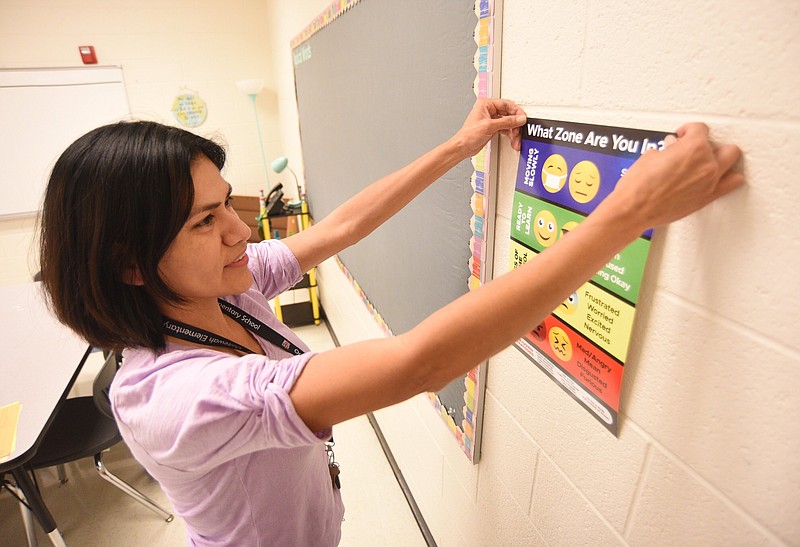As school budget season approaches -- this year with a new state funding formula -- the Hamilton County school district is taking a student-centered approach to determine its staffing needs.
The plan includes a proposed $25 million in supplemental dollars that would be allocated to schools on a per-student basis. For each student, schools would receive a base amount, with additional funds for those with additional educational needs, like students who are economically disadvantaged or who are English language learners.
With those dollars, principals would have the ability to tailor their staff to meet the student needs in their schools, according to a recent news release.
"It's a hybrid model of student-based (funding) where the base will heavily emphasize student wellness," Superintendent Justin Robertson said in a phone call.
To provide those wellness supports, the district is creating three new job types.
The first is a response-to-intervention teacher, who works to identify struggling students early and give them support. The second is an intervention teacher, who will provide small group or individual instruction in academics while also supporting the response team. The third position is what's called a social, emotional and academic development coach. That person provides assistance to students, staff and families in support of the district's effort to better manage student behavior.
The coach does not necessarily need to be licensed or certified in any particular field, but can be, district officials said at a Jan. 19 board meeting.
"We've intentionally written the job description that it doesn't require a teacher license, so it's not another administrator," Robertson said at the meeting. "It's recognizing that we've got plenty of people in our community that have worked with kids for years and have done a great job of connecting with them and helping them to get connected in schools in the community and with adults."
But board member Larry Grohn, R-East Ridge, said he doesn't support the district's push on social-emotional learning.
"We're expecting third graders to act like grown-up adults?" Grohn asked. "I have a really difficult time supporting your social-emotional learning phenomenon that's really been taking over our schools for the last 15 years."
District officials said the coaches are a response to community and teacher demand for increased behavioral interventions.
"Putting these in place to support kids, the assistant principals and principals will be able to do what we've been asking them to do on academics," Robertson said.
Deputy Superintendent Sonia Stewart said the coaches will work in many capacities, such as providing classroom relief in an instance in which a student is disrupting a lesson. But their overall role is much greater.
"They're not just a relief for classrooms," Stewart said in a phone call. "They're building the capacity of the entire school to respond in those situations."
She added that the coaches may not carry out or determine discipline.
The district plans to place a social, emotional and academic development coach in every building.
STAFFING MODEL
Robertson said the additional $25 million comes from identified budget savings but will also be partially funded by new state dollars.
According to documentation obtained by the Chattanooga Times Free Press, the staffing allocations are estimated as follows:
-- Base: $431 per student.
-- Economically disadvantaged: $354 per student.
-- Non-proficient: $336 per student.
-- Concentrated poverty: $285 per student.
-- Special education: $162 per student.
-- English language learners: $180 per student.
That means students who have more needs will receive more funding. For example, a student who is economically disadvantaged would receive the base amount plus the additional allocation of $354, a total of $785. Should that student move to a different school, that funding would go with them.
"We believe that the dollar should follow students," Robertson said. "The needs of students should be addressed at every school, regardless of where they are."
Under that funding model, officials estimate a school like The Howard School would receive $1.4 million in addition to approximately $800,000 in federal Title I funds for low income schools.
And though some teaching positions may be cut and student-to-teacher ratios may increase depending on what each school decides, officials expect the adult-to-student ratio will decrease.
"This is a significant lever for change and a real opportunity for innovation," Stewart said. "There should be some real enthusiasm. I understand people are coming to understand it, but this really is pushing resources towards the students based on what we hear."
Final allocations are still being determined, and the Board of Education has yet to approve the budget, but Robertson said he expects board members' full support.
Contact Carmen Nesbitt at cnesbitt@timesfreepress.com or 423-757-6327.
